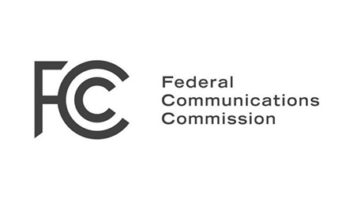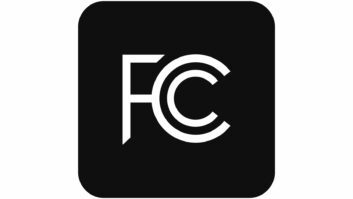The men from Munn all participated in answering questions. From left to right: Ed Trombley; Rick Grzebik; Bruce Bellamy and Don Baad. Thumbs Feebleman is the short wooden character in the middle!� 🙂
Paul McLane:�We�re about to see the fourth and presumably final translator window opportunity for AM stations to obtain FM translators. But at this point, how many stations do we think���haven�t�pursued these opportunities to move or add a translator?
Ed Trombley: Hard to say exactly because a regular FM translator and a translator used for an AM fill in all use the same file numbers making them hard to sort out. An educated guess from the numbers I�ve seen is more like one out of four AM station has or will apply for a translator. So that leaves three out of four that will sit back and watch.
For others the argument is simple, pursue obtaining an FM translator to increase listenership, station value and recover lost sales revenue. Some stations will even be able to add or improve meaningful nighttime. No AM station should pass up on this opportunity! Indianapolis has a 50 kW AM station that has a fill in translator. It�s not power and it�s not coverage, it�s all about having a channel on the FM dial.
McLane:What questions are you getting about this window from your clients or interested parties?
Trombley: Can I get a frequency? What does the frequency and coverage look like? What is the likelihood of being challenged? What are the chances of me being in conflict with another applicant? How much will it cost? What if I can�t find a tower and have to build one? Most if not everyone has come to the point where they realize the value it creates outweighs the expense.�
Most engineers will discover that building out a translator will eat up as much planning and time as a much larger station would. Here is a very big tip: If you�re placing your new 250 watt power house translator on a tower that has a much larger, full service FM station already on the tower, don�t forget the filters to kill the inter-mod. Your new translator station has to meet the requirements of part 73.317 of the rules. Look for more on this topic in the next Munn-Reese newsletter. If you�re not presently receiving the newsletter, email [email protected] and ask to be added to the list.
McLane: Can stations qualify for a second translator? How?
Trombley: AM stations can participate if they did not apply in the 2016 translator modification windows or the first class C and D AM station window in July and August of 2017. The request for a second translator requires a �Showing of good Cause.� If an AM station already had a translator before these windows opened, they are eligible to apply for an additional translator in the last window. The proposed new FM translator cannot substantially overlap its 60dBu / 1 mV/m contour with the existing FM translator�s 60dBu / 1 mV/m contour. Also, the proposed new FM translators 60 dBu / 1.0 mV/m contour must be contained within the greater of either the 2 mV/m daytime contour of the AM station or a 25-mile (40 km) radius centered at the AM transmitter site. This can allow some stations to cover a neighboring city, that their current nighttime operation may not cover.�
McLane: Why is it important to have an application ready before the window opens?
Trombley:�It is good plan to allow your consulting engineer plenty of time to find the best options for your translator, and time for your attorney to file it. We expect a few last minute requests to find a translator. It happens! We want to make sure no one loses out, but we are not interested in staying up 24 hours in a mad rush before the window closes. It�s just an opportunity to make mistakes.�
Thumbs still has nightmares from the last day crush when the Wireless Branch imposed part 101 frequency coordination for 900 MHz STL systems and published a cutoff date. If a station filed before the cut off they got out of the extra expense of Part 101 coordination. Munn-Reese got hit with a pile of late applications. On D-day, middle of the early morning with the end 2 hours out the overloaded Universal Licensing System snorted, then rolled over and went casters up!�
McLane: What questions should AMs be asking right now?
Trombley: Where’s the optimal place to locate my translator? Know the boundaries of the coverage area of the translator and look for areas within the AM contour or 25 mile radius that maximize population. Got a directional array with an ugly nighttime null through bedroom community? The old joke was the GM�s house was always located in the AM�s deepest nighttime null so he couldn�t listen to his own station at night. Use a translator to fill in that null and pick up that lost population. (But then you�ll need to program something the GM likes at night!)
McLane: What else should AM stations know?
Trombley: This window is considered by many to be the last good opportunity for large to small markets to get an FM translator for an AM station, and not have to pay the tens of thousands of dollar to buy an existing translator like in the 2016 modification window. Even though the earlier window was reserved for Class C and D stations, this window is open to all classes of stations.
The upcoming AM revitalization plan will separate the AM Men from the cry babies. If the AM contour protection rules change like the suggested ones we have been playing with, many AM stations in the US will be able to make major power increases. We�ve studied about 125 AM stations in the Great Lakes area. A hand full of owners can take their 250 watt AM stations and kick �em up to 50 kw, non-directional! Sadly the government can�t change the laws of physics so most changes for nighttime operation are expected to be minor. Every AM station owner should get a power up study done to discover its options.�
If you have an AM directional array there are some pleasing advantages to preforming a Method of Moments AM proof on your station. The every 2 year requirements for recertification of the MoM proof is gone. So, bring your array up to Good Engineering Standards, proof it, and kiss your MP�s good bye. We have also discovered that arrays that were unstable brats become well behaved kids after the MoM modeling places the operating parameters in the sweet spot.�
To call Munn-Reese for their broadcast engineering�consulting needs!� :-)�
McLane: Who exactly is Thumbs Feebleman?
Trombley: He’s an FCC theologian whose alias allows him to pontificate and prognosticate without fear of any consequences whatsoever. Thumbs is the alter ego of his real person. Thumbs is the Walter Mitty of radio engineering. Thumb�s day job involves reading 1000s of pages of incredibly boring FCC digest, Federal Register and countless federal regulations. That includes all the foot notes too, just like E. Harold Munn, Jr. trained us to do. From the government-issued, hard-to-read legalese script, Thumbs is in tune with the ebb and flow of the commission. Thumbs is also the editor of our office newsletter, which we publish solely for the enjoyment of our clients.�
�












